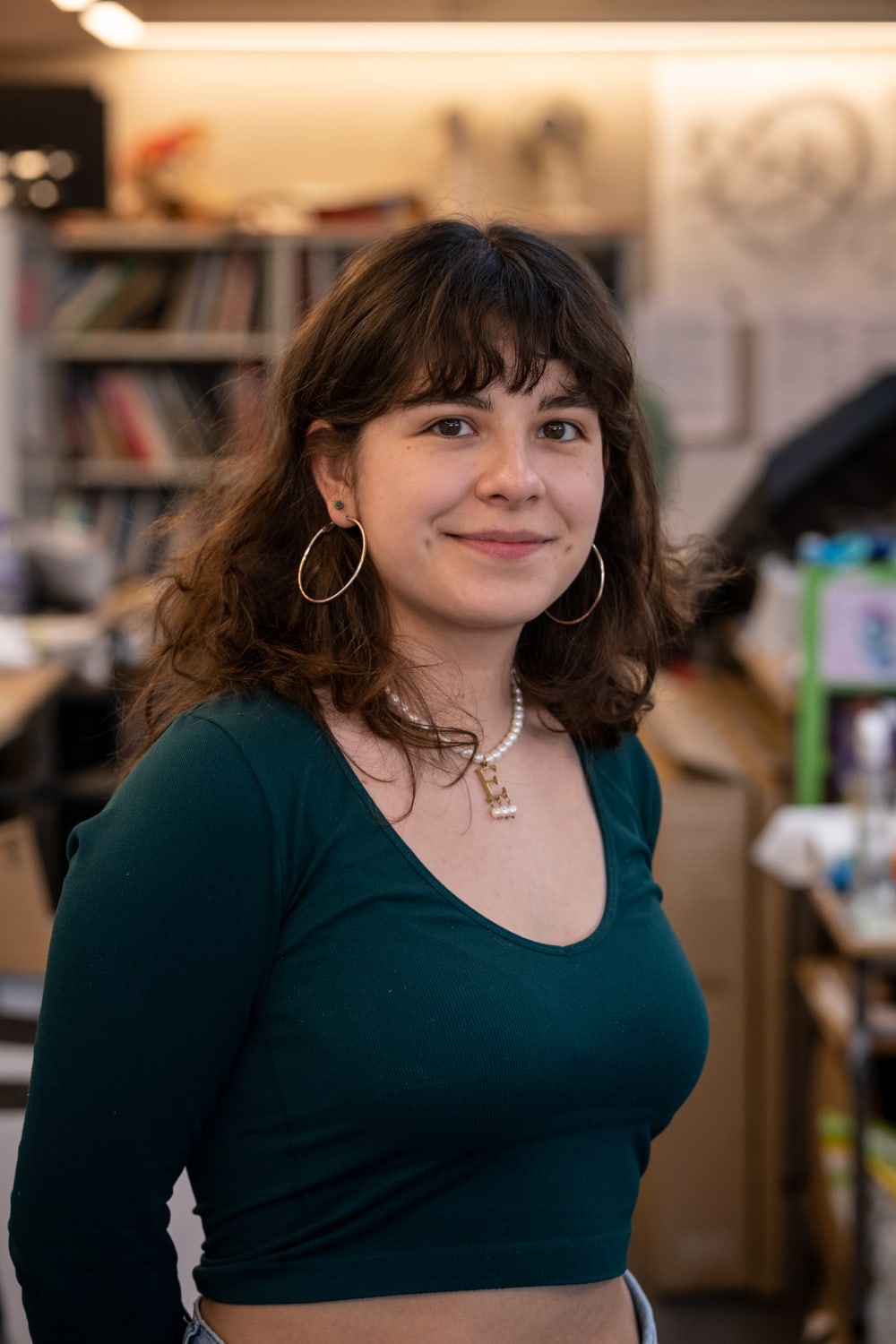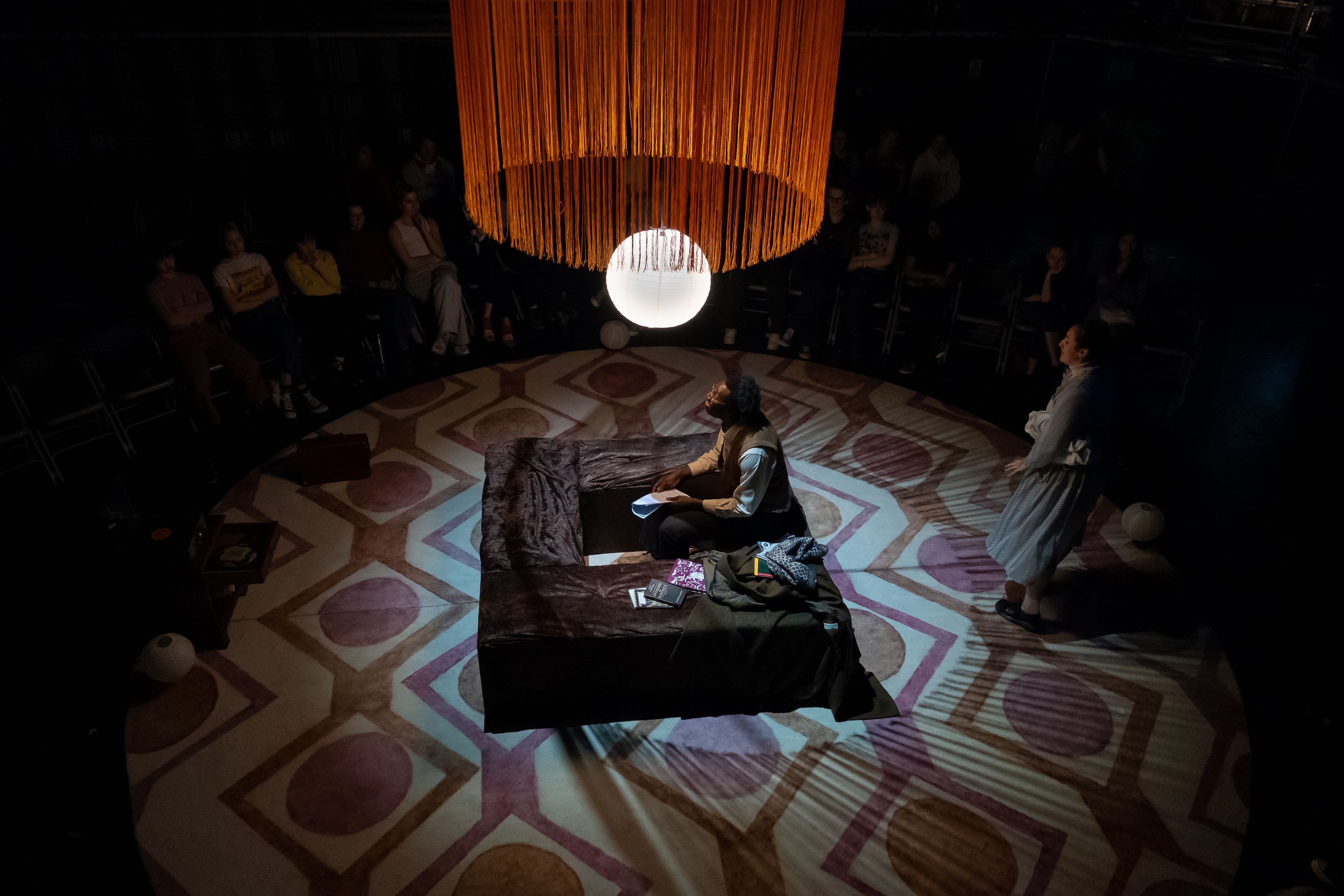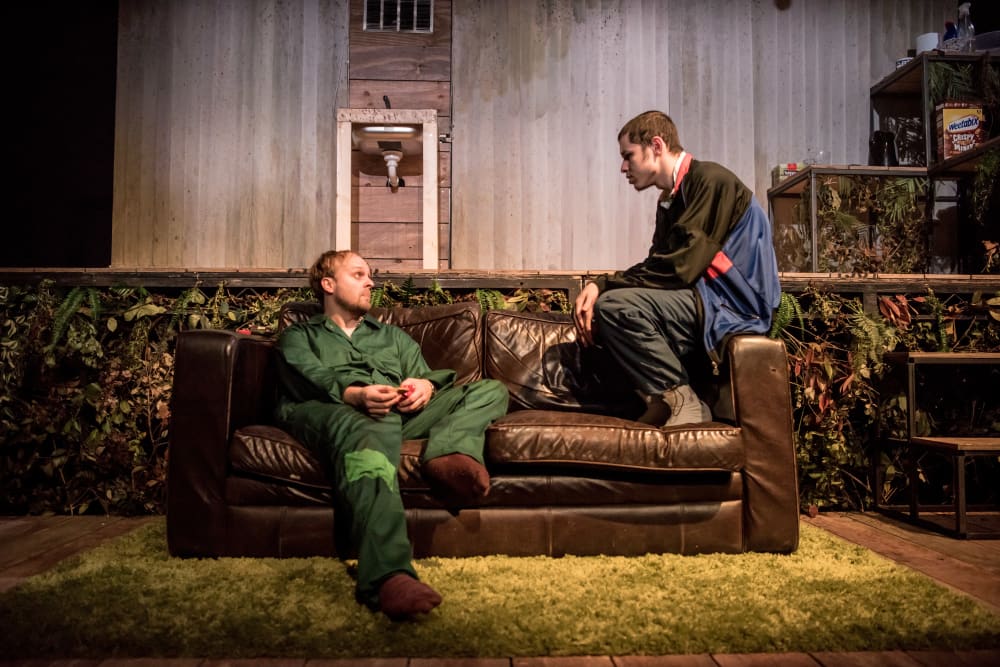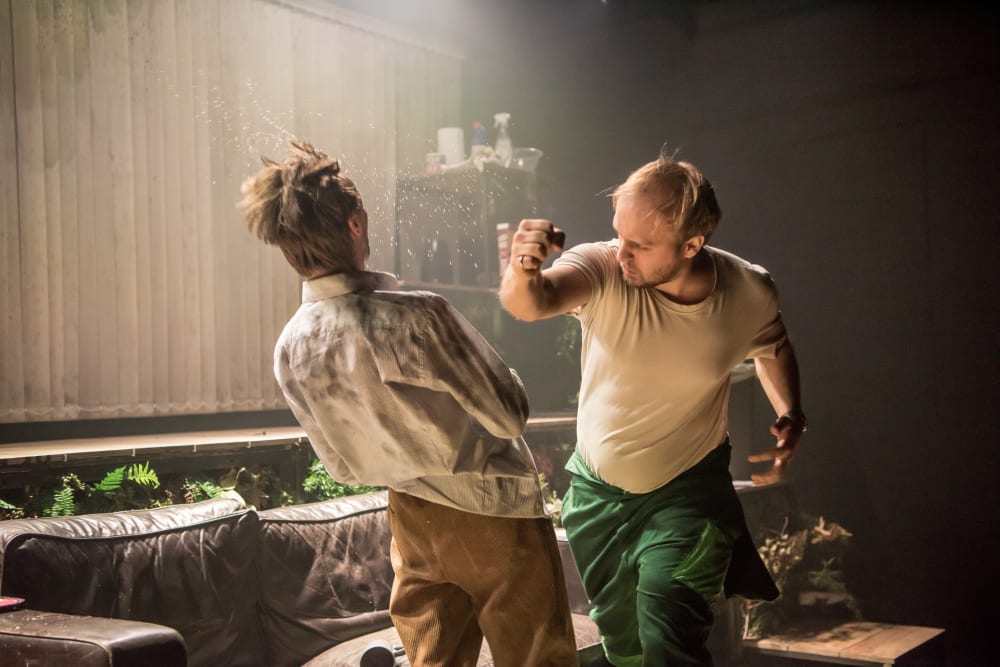
Meet: Emilia Mendez

- Written byEleanor Harvey
- Published date 23 October 2024

Performance designer Emilia Mendez was drawn to the massive creative potential that live performance offers.
For Emilia, there’s real potential for theatre to impact political and social change; for her it's “a way to explain a perspective or story to people who have no lived experience of it in a way that has the potential to feel real”.
She also sees the potential to make real change within the industry itself, by ensuring that sustainable practice is always part of the conversation. Working in an industry with an inherent environmental impact, it’s a core part of her role no matter where she’s working.
Despite only graduating in 2023, from BA (Hons) Theatre Design, Wimbledon College of Arts; Emilia’s already worked on some amazing projects, including as the Design Assistant for the recent production of Fangirls at the Lyric Hammersmith.
Emilia spoke to us all about her time at Wimbledon, as well as the highs and lows of working in live performance.

You graduated from Wimbledon College of Arts in 2023. What did you enjoy about studying BA Theatre Design?
Everything! Even starting in a pandemic, although very challenging, was a useful introduction to a profession that tends to revolve around creative problem solving. The BA Theatre Design course is somewhat unique in that it is part of an arts university rather than a drama school and I think that was incredibly important in developing my practice as we approached our work first and foremost as artists.
Despite the name of the course, we explored the many different forms performance can take which widened the scope of what our careers could look like. There was a lot of creative freedom in undefining the role of performance designer.
I feel deeply privileged to have spent three years working alongside incredibly talented creatives from staff, to visiting lecturers, to my peers. Being surrounded by likeminded artists who were always supporting and challenging my work was endlessly inspiring and motivating.
What was the highlight of your experience of studying at Wimbledon?
Besides being a part of a wonderful creative community, a highlight for me was having the opportunity to stage my own design at the iconic Lyric Hammersmith Theatre.
As part of this project, I had the privilege of working with director Lyse Marcelle and an incredibly talented and dedicated cast to make a performance we were all proud of.
The show was staged alongside three other productions designed by my course mates Shahaf Beer, Andrew Yu and Agnes Yeung. Fellow designer Amelia Kyriacou helped me backstage during the live shows. It was incredibly exciting to go through the experience surrounded by my close friends; it made an amazing experience even more enjoyable.
I found a lot of satisfaction in staging a set that I had designed, developed and constructed by myself. The process provided me with a great deal of confidence as I entered the theatre industry professionally.
What drew you to performance design?
Performance design allows me to fully investigate the intersection between contextual research, visual experimentation and textual analysis all while creating something that must be serviceable for an audience. Often, performance design feels less like creation and more like discovery as you try to uncover the final form of a production, almost like it’s a puzzle to solve, and I always enjoy this part of the process.
I was also drawn to performance in general as it holds potential for political and social change on both an individual and societal level, and I was interested in having a role in facilitating this. The arts are a way of allowing audiences to engage with their own experiences and emotions or introducing them to new narratives in a controlled environment. Live performance is a way to explain a perspective or story to people who have no lived experience of it in a way that has the potential to feel real. This is an incredibly influential tool and combined with the shared experience of theatre, can be deeply unifying.


What inspires you?
I love collecting stories and I am always inspired by great storytelling, whether it be a formal performance or just a conversation! I am fascinated by folklore and seeing how stories emerge and survive as well as how the very craft of storytelling has evolved over millennia.
I also draw a lot of inspiration from collaboration, and it is wonderful to be a part of an industry where this is foundational to the work we make. Working with other creatives informs my work and enables me to approach it from different perspectives and discuss and develop it via different reference points.
In 2023 you won the David Farley Sustainability Award. Why is sustainability so important to your process, and how do you bring it into your projects?
As a creative in an industry with an inherent environmental impact, I have a responsibility to work sustainably across all my projects. It would be hypocritical to try to make socially engaged work while contributing to climate change.
During my degree, David Farley was incredibly influential in supporting and informing my interest in sustainability. He provided us with a materials library so we could understand the practicality of what we were designing and introduced me to mycelium as a construction material, which I used in my final design project.
Since leaving university, I am careful to keep sustainability in all discussion around the productions I work on whether in relation to sourcing new materials, reusing old materials, transport, waste, and all sorts of other details.
It has been exciting to see the theatre and performance industries take sustainability seriously in recent years and as a freelance designer it is part of my role to stand by sustainable practices no matter where I’m working or who I am working with.
There are many resources I can now refer to as a theatre maker. The Theatre Green Book, Julie’s Bicycle and organisations such as the Society of British Theatre Designers are actively opening up space for theatre makers to discuss the sustainable future of theatre.
What advice would you give to students who have just graduated?
Don’t limit yourself as an artist and don’t put pressure on yourself as a person! As a creative, your practice is always evolving so keep experimenting with what you enjoy and explore things you might like to try - you might find a new career or hobby. There is no clear path in the creative industry and, especially just after graduating, this can be extremely daunting, but it is also incredibly liberating! Your skillset is unique to you and incredibly valuable so put it to good use whether that’s professionally or personally!


Can you tell us what you’re currently working on?
I’m currently working on an adaptation of Antony and Cleopatra - Cleopatra’s Antony - as part of Theatre Peckham’s ‘Young, Gifted and Black’ season from Thursday 31 October – Saturday 2 November 2024.
This production explores themes of diaspora, duty and loyalty and my design features elements of Afrofuturistic influence.
It is a project I’m incredibly excited to be working on alongside the very talented director Mo Korede, an incredible creative team and an amazing
cast!
How have you found being the assistant designer on Fangirls?
Working on Fangirls was an incredible experience!
It was such a pleasure to be invited to work on this project as I have great admiration for the work the Lyric Hammersmith do and the talented people who work there.
I had the pleasure of assisting David Fleischer, designer of Fangirls, who was lovely to work with and, knowing I was new to professional theatre work, made a very generous effort to ensure I could learn as much as possible and observe aspects of theatre making, I wouldn’t normally get to see.
I worked closely with Harry Whitham, Head of Costume, helping him with all sorts of exciting costumes and I’m eternally grateful for the encouragement and support he and Kyle Maenz, Costume Deputy, showed me as I learned the ropes.

What’s been your favourite aspect of this work and what’s something that’s been challenging?
Much of my role was assisting with material sourcing so many of my days were filled with adventures around London as I visited haberdashers, fabric stores and a plethora of other specialist establishments. My mental rolodex of theatrical retailers was filled by the end of this project! I met so many different people working in the performance industry, and it was so useful and interesting to see and hear how everyone’s roles intersected.
It was also fantastic to work on a show that was so much fun, exploring themes of teenagehood with incisive humour and an excellent soundtrack to boot!
I found the pace of work and the long hours as we approached press night quite demanding, however working with such a fantastic team meant I felt very well supported and I couldn’t wait to share it with an audience!
What do you think makes a good theatre designer?
I think to be a good theatre designer you must be a willing collaborator; and to be a willing collaborator you must stay curious. From what I can glean of the more senior designers I have been lucky enough to work with, a great theatre designer knows when to compromise and when to double down on their creative decisions and follow their instincts. Furthermore, the role requires patience and compassion when working closely with other creatives to ensure you can both deliver your best work. I am also learning that to be a good theatre designer you need to be incredibly organised; this is a skill I am still trying to hone…
Connect with Emilia:
- Website: emiliamendez.com
- Instagram: emiliaart.inc
Emilia’s current project, 'Cleopatra’s Anthony', is on as part of Theatre Peckham’s Young, Gifted and Black season.
